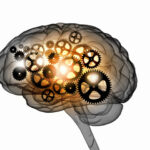
There are many misconceptions surrounding the prevalence of anorexia nervosa. According to statistics provided by the Renfrew Center Foundation for Eating Disorders, approximately 24 million Americans and 70 million individuals worldwide struggle with an eating disorder of some kind. The Mental Health Services Administration in the United States Department of Health and Human Services reveals that around 90% of people who struggle with an eating disorder are women aged 12-25. However, it’s wrong to assume that this condition only affects women. The misrepresentation of anorexia and other eating disorders as “women’s diseases” has led to the severe underreporting of such disorders in males.
It is believed that around 10-15% individuals with anorexia or bulimia are males. Many more men might struggle with an eating disorder but are afraid to come forward because they believe admitting to having an eating disorder is emasculating. Conversely, it is believed that 1 in every 5 women will struggle with an eating disorder at some point during their lifetimes.
Public Misconceptions about Eating Disorders
Public perceptions and understandings of eating disorders like anorexia nervosa are shrouded in myth. Dr. Paul Rhodes, an associate professor at the University of Sydney, explains it thusly: “At best they think maybe its because of media influence, skinny girls in magazines, or that it is a persons’ attempt to get control in difficult circumstances. This kind of simplistic view protects them from thinking about the pain and suffering involved, the deep distress caused by an illness that has its roots in genetics, personality, society, you name it.”
In other words, the reality behind anorexia for many people is complex and difficult for many of us who are not familiar with the disorder to both understand and accept. This can make seeking treatment challenging, particularly for adolescents who are afraid of facing judgment from their peers and family. However, according to Dr. Rhodes, “We know that up to 60 percent can recover through family-based treatment.” The effort put in by parents over a 12-month period can sometimes make all the difference in their child’s recovery. When caught early, usually within the first three years, the chances of remission become very good.
A New Approach to How We Treat Eating Disorders
But in recent years, leaders within the psychological community have been developing a new way of addressing patients with anorexia nervosa. Their focus has shifted from simply “curing” patients to enhancing their overall quality of life. In essence, what this means is expanding the focus of treatment from solely promoting weight gain to full medical stability. In doing this, they seek to establish communities of care and support. This new approach helps offer the patients not only rehabilitation but the hope that it is possible to survive and thrive through a more holistic model of treatment.
This new approach consists of several key components:
- Putting focus on improving nutrition and maintaining the safety of the patient – not just on gaining weight.
- Develop the patient’s quality of life – this includes engaging them in meaningful activities.
- Work on developing independence and interpersonal skills.
- Establish a multidisciplinary team and work collaboratively during medical crises if they occur.
- Support the patient’s family members and help them receive care for their own distress.
- Don’t just focus on the problems – also focus on the patient’s strengths and abilities.
An Effective Method of Treatment
This new approach to treating anorexia nervosa and other eating disorders just might be more effective than previous treatments. Dr. Rhodes cites the results from one study in particular, published by the US National Library of Medicine. This study compared the effectiveness of this treatment with the more traditional approach of cognitive behavioral therapy, or CBT. In doing so, they compared it to supportive clinical management. According to Dr. Rhodes: “At 12 months CBT had improved social interactions, lowered some of the psychological symptoms of anorexia, and increased the readiness of the patient to consider recovery. Drop out from treatment was only 13 percent, remarkably low for people struggling with anorexia nervosa.”
So what does this mean? Well, for one thing, it shows that there may be an alternative and more successful open for rehabilitating individuals struggling with eating disorders. This approach encourages the patients to acknowledge their own potential and focuses as much on their happiness and well-being as it does on simply remedying weight loss. This new program is also inclusive of the individual’s family and loved ones and takes into account the stress they endure as supporters of someone who is struggling with an eating disorder. As such, it acknowledges the road to recovery as a collaborative effort, inclusive of family, the patient themselves, and the professionals who seek to help the patient overcome their disorder and return to healthy living.
It’s also worth noting that this approach might even benefit those with severe and enduring anorexia. While individuals in this particular circumstance may feel helpless, interventions such as these can help small groups of patients at a time can, as Dr. Rhodes states, “do the impossible.” There may be no set “cure” for anorexia or other eating disorders, no solid answer, but there is treatment and, with that treatment, the hope for a better way of life.




